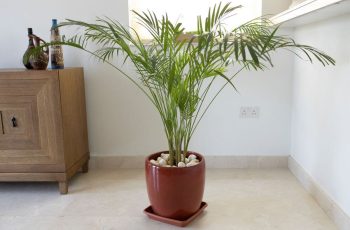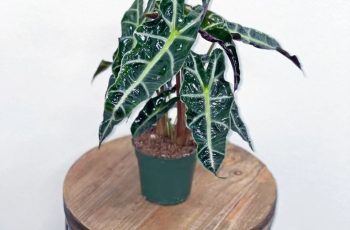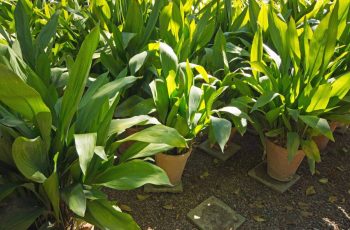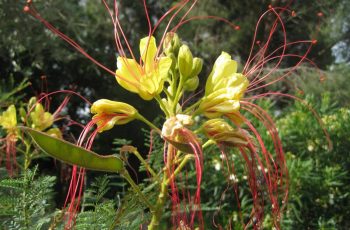Dieffenbachia, commonly known as Dumb Cane, is a highly favored houseplant due to its striking appearance and relatively easy care requirements. This tropical plant hails from the Caribbean and South America and belongs to the Araceae family. Dieffenbachia is recognized for its large, ovate leaves that display a mix of white, cream, and green patterns. The term “Dumb Cane” originates from the plant’s toxicity; chewing its leaves can lead to swelling of the tongue, making it difficult to speak.
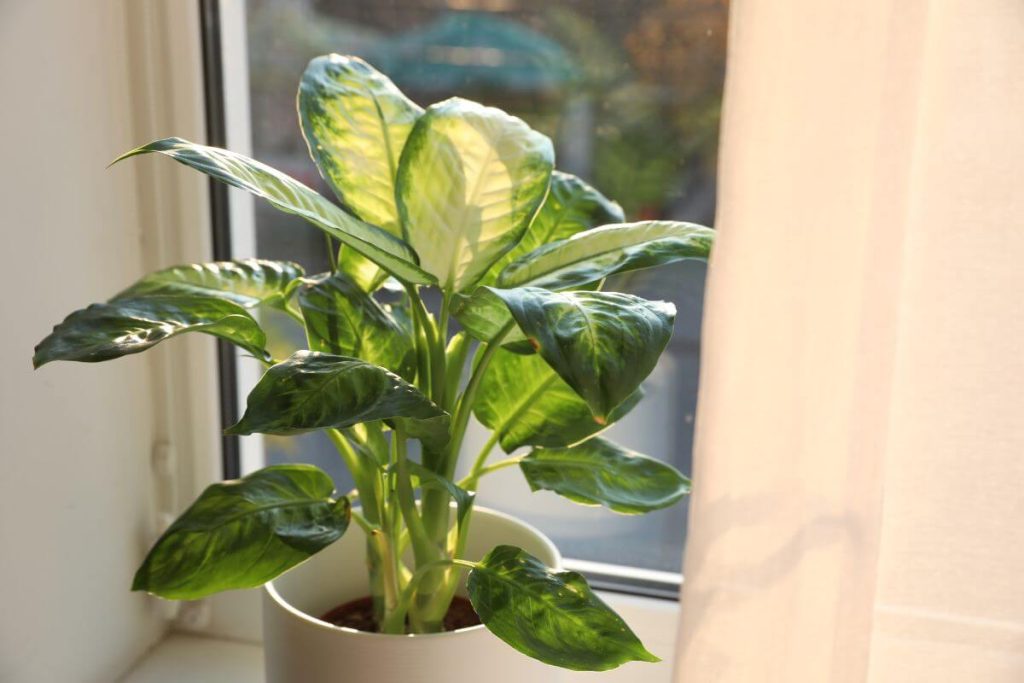
Overview of Dieffenbachia
Dieffenbachia plants are known for their impressive growth, with some varieties reaching up to ten feet in height in ideal outdoor conditions. However, when grown indoors, they typically grow between three to five feet tall, with leaves that can extend up to twenty inches. This genus comprises over thirty species and numerous cultivars, each offering unique foliage patterns and colors. Popular varieties include Dieffenbachia Seguine, Dieffenbachia Oerstedii, and Dieffenbachia Maculata, each with distinctive characteristics.
Care Instructions
- Soil Requirements: For optimal growth, Dieffenbachia thrives in fertile, well-draining potting soil. The soil should have a slightly acidic pH, ideally between 6.1 and 6.5. Good drainage is crucial, as soggy soil can lead to root rot. A high peat content in the soil mix can enhance moisture retention and overall health. It’s advisable to refresh the potting soil annually, as nutrients deplete over time.
- Temperature Preferences: Being a tropical plant, Dieffenbachia prefers warmer temperatures between 65°F and 75°F (18°C to 24°C). Exposure to temperatures below 60°F can result in leaf drop and stunted growth, so it’s essential to keep the plant away from cold drafts and air conditioning vents.
- Light Conditions: Dieffenbachia does best in bright, indirect light. While it can tolerate low-light conditions, it will thrive and grow more vigorously in brighter settings. To ensure balanced growth, rotate the plant occasionally to prevent it from leaning toward the light source.
- Watering and Humidity: This plant enjoys high humidity, typical of its tropical origins. Water Dieffenbachia regularly, allowing the top two inches of soil to dry out between waterings. During winter, reduce watering frequency, as the plant requires less moisture in cooler temperatures. To increase humidity, consider placing the pot on a pebble tray filled with water or misting the leaves during dry months.
- Fertilization: Dieffenbachia is a heavy feeder and should be fertilized every four to six weeks during the growing season (spring and summer). A balanced, water-soluble fertilizer diluted to half strength works well. Some gardeners opt to fertilize lightly at each watering to ensure continuous nutrient availability without risking root burn.
- Pruning and Repotting: Regular pruning helps maintain the plant’s aesthetic appeal and promotes bushier growth. Remove any yellowing or damaged leaves to encourage new growth. Repotting should occur annually to provide fresh soil and prevent the plant from becoming root-bound. When pruning, wear gloves to protect your hands from the plant’s sap.
- Propagation: Dieffenbachia can be propagated through cuttings or division. For cuttings, take several pieces of stem and lay them horizontally in damp potting soil. For division, carefully separate offsets during repotting, ensuring each section has roots.
Pests and Problems
While Dieffenbachia is generally resilient, it can be susceptible to pests such as spider mites and mealybugs. These pests can cause leaves to turn pale or develop a web-like appearance. To treat infestations, use neem oil or horticultural soap. Overwatering is a common issue, leading to root rot, while yellow leaves can indicate problems with pot size, temperature, or light exposure.
Toxicity and Safety
Dieffenbachia is toxic to both pets and humans due to the presence of calcium oxalate crystals in its leaves. Ingestion can cause severe discomfort, including swelling and burning in the mouth and throat. Always wear gloves when handling the plant to avoid skin irritation, and keep it out of reach of pets and small children.

Conclusion
Dieffenbachia is an attractive and beneficial houseplant that can enhance any indoor space with its lush greenery and air-purifying qualities. While it requires some attention and care, it is suitable for indoor gardeners with basic experience. With the right conditions and care, this resilient plant can thrive and become a stunning focal point in your home or office.

